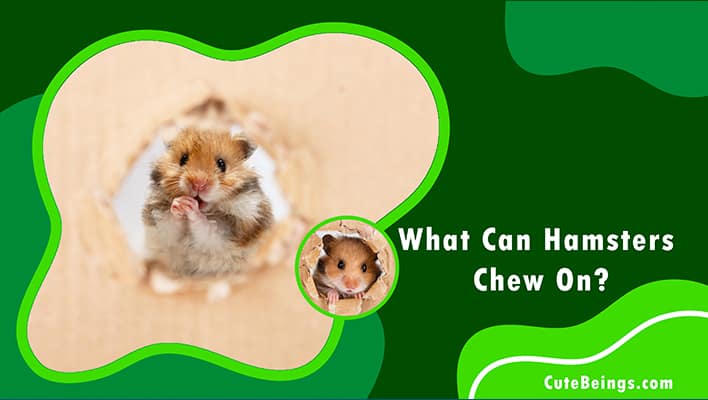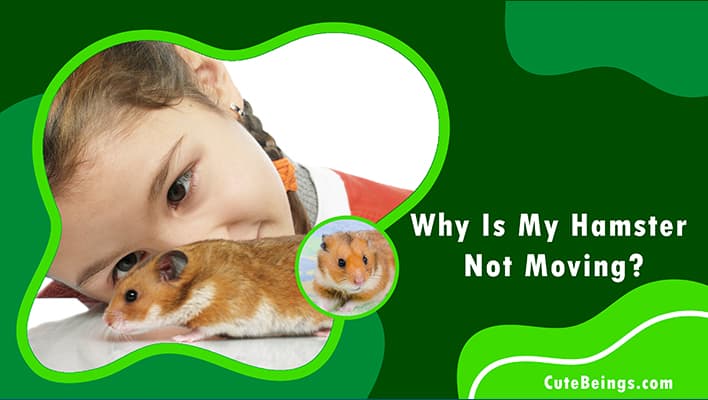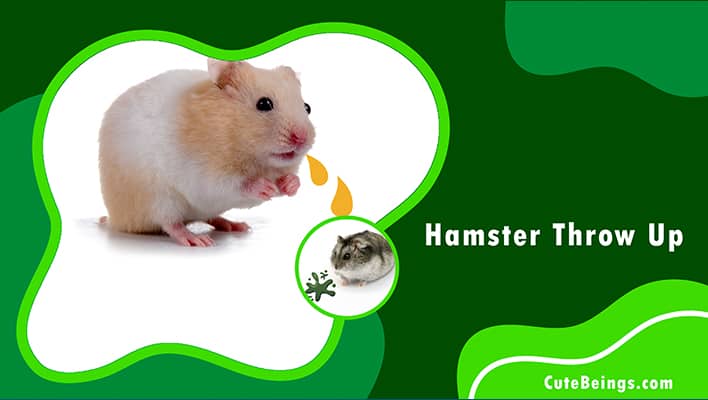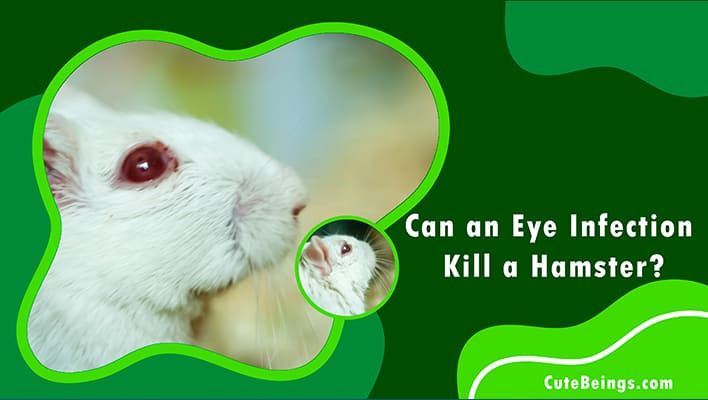Table of Contents
Are hamsters allowed to chew on?
As chewing is a normal behavior for these cute little creatures, you are giving your hamster the proper things to chew on. You ought to keep some things out of your pet hamster’s enclosure for the animal to be healthy and content.
Things hamsters can chew on
Toilet paper rolls
Empty toilet paper or paper towel rolls are frequently thrown into the enclosure of pet hamsters, and this is acceptable. It’s fine if your hamster decides to use the toilet paper roll for something other than chewing, like as a bed.
Simply make sure the roll you offer your hamster doesn’t have any residual glue on it.
Cardboard
You can let your hamster chew on cardboard as long as it doesn’t contain any food, is made of polythene, has glue on it, is shiny, or has any other potentially harmful characteristics. In fact, giving your pet cardboard is advised because it will keep them occupied. Cardboard is not only used by hamsters for chewing, but they frequently use it to build nests and other things as well.
Stick from outside
Sticks or pieces of wood from outdoor locations make great chew toys for pet hamsters. Remember that hamsters like wood sticks from a fruit tree; you might want to focus on sticks from an apple or pear tree in particular to make your pet truly happy.
Naturally, before giving your hamster sticks from the outside, make sure they haven’t been contaminated in any other ways, like being urinated on by a dog or being sprayed with pesticides.
And here is list of thing you can give to your pet to chew on
- Wooden bendy bridges
- ecotrition snak shak log (not for dwarfs)
- willow branch ball
- ware nature ball
- cheeseburger chew
- natural wood chews
- super pet nut knot nibbler
- fruit-shaped chews
- dinosaur chew
- alligator whimzees
- super pet combo chew
- mineral chews (not much)
- Apple orchard stick
- wooden chews
- gnawsome hut chews
- seagrass twist
- food pellets like mazuri rat and mouse lab blocks
- super pet critter ka bob
Things hamsters can’t chew on
Popsicle Sticks
Popsicle sticks can be added to the list of things you should never give your hamster. As they are often composed of brittle wood, which will break into sharp splinters, they can become harmful when chewed on by your pet. This is especially true when your hamster is storing it.
Straw
Straw should not be given to hamsters to chew on or used as bedding in their habitat. Straw is fairly stiff and pointy, so when your pet chews on it, it could hurt them. If they store it in their cheek, the risk of injury increases.
Pine cones
Pine cones may be given to hamsters by some owners, but many people advise against it since they can harbor hazardous bacteria that could injure your pet.
When it comes to pine cones from the store, these are frequently well washed but also frequently treated with a chemical to preserve them.
Are wood chews safe for hamsters?
Hamsters chewing wood is not an abnormal thing. In the wild, hamsters search the area for wood that looks appetizing and then settle in. Each type of hamster has access to a different wood in nature because they live in a range of habitats, but they normally like all soft woods. The wood is more like bubblegum than what the hamsters actually chew. They will take a piece and chew on it for a while, but they are not truly eating a snack; rather, they are giving their teeth a nice workout. Trees that bloom (magnolia and dogwood), bear fruit (apple trees), produce nuts (walnut trees and pecan), and a small number of other trees (such as willow, poplar, hawthorn, and balsa) all come under the soft wood category.
How to encourage hamster to chew
If a hamster is not interested in its chew sticks or toys, it tends to start biting things it shouldn’t, such as its cage. Try giving your hamster toys that have different shapes and textures if they are not engaging. In addition to changing out their toys, you can also alter their current toys to make them more alluring. You can do following things to make their toys more interesting
Introduce flavors
Your hamster may not be interested in their chew stick or toy because it lacks flavor, for example. Fortunately, it is possible to flavor hamster chews. Applying a small amount of peanut butter or honey to the toy is one way to give it flavor. Prior to providing the chew to your hamster, remove any extra. If your hamster enjoys its regular meal, you might want to try placing chew sticks or blocks in the same container. Your toys will taste and smell like hamster feed if you store them together.
Make a difference
You might try switching the material if your hamster avoids wood chews or toys. Seagrass, corn cobs, rice pops, and salt or mineral chews are some other items that hamsters can nibble on.
Remember to only leave a mineral or salt block in your hamster’s cage for a brief period of time after providing it to him or her. You shouldn’t have salt or mineral blocks in your hamster’s cage all the time. Your hamster ought to be getting all the minerals it requires if it is eating a balanced diet. In this instance, rather than using the mineral chews to make up for deficiencies, you are using them to enhance tooth health.
Why is my hamster chewing so much?
A hamster may start chewing on their cages when they are bored, lack stimulation, or don’t have enough things to gnaw on. Cage chewing is a common problem, but it can be detrimental to your pet.
Too much bar chewing can cause tooth damage or a condition called “bar rub.” This illness causes swelling around your pet’s mouth and nose, but it also puts them at risk for more serious infections. It is best if your hamster is not chewing on its cage for the sake of your sanity and the health of your pet. By giving your hamster a stimulating and enjoyable environment, you can frequently find a solution to this problem.
How do I get my hamster to stop chewing?
A hamster can be prevented from chewing on the cage bars in a few straightforward ways.
First, make sure your hamster’s cage is stocked with lots of secure objects for it to chew on. Ladders, buildings, and chew or food blocks made of wood are all excellent choices that may be quickly changed out as needed.
Next, make sure your hamster has access to a wheel for exercise as well as other things to climb, investigate, and enjoy physically.
Lastly, ensure that your hamster is not under any stress. You might need to switch out small cages for bigger ones, and you might need to relocate the cage. It may be necessary to move the cage if it is close to the ground or if a cat may get it.
Children who are loud or overly animated can also cause stress, so you might need to place the cage in a calm area. You should handle it gradually, constructively, gently, and under adult supervision.
Can hamsters chew on cardboard?
It’s acceptable for many hamsters to consume cardboard. Hamsters typically eat cardboard that they find in their cage, chew on it, and use it to build nests. No matter what breed they are, most hamsters like to chew on and consume cardboard. Depending on the individual and what else is available in the cage, you might be surprised by how much they can chew.
Is cardboard safe for hamsters?
Ingesting particular cardboard products could even get your pet friend sick! We understand your desire to keep your hamster safe and well.
- Make sure there are no glue, adhesives, or chemicals on the cardboard. Your hamster could become seriously ill if it consumes these kinds of chemicals.
- Remove any wax, plastic, or glossy paper from the cardboard; your hamster should not be exposed to these materials.
- The ideal cardboard to use is non-glossy and dye-free. Your hamster can become ill due to the chemicals.
- Useless containers are grocery store storage containers for fruits and vegetables that have come into touch with food. Your hamster could be poisoned by pests, leftover insecticides, or food particles.
Can hamsters chew plastic?
The material is simple for hamsters to chew on, and they can absolutely consume it. Since hamsters’ teeth continue to grow throughout their lives, they must nibble on objects to prevent their teeth from getting too big. However, they shouldn’t let their teeth go through plastic.
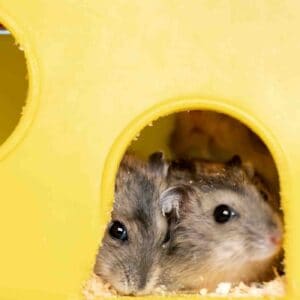
Although your hamster can chew through a piece of plastic, this does not necessarily mean that it is the ideal material for them.
Your pet could get hurt if plastic is broken, since it becomes quite sharp when it does. Additionally, due to its rigid nature, plastic can be quite tough for your pet to gnaw on and may actually cause damage to her gnashers rather than keep them at the proper length.
How to stop hamster from chewing plastic
You can give them a variety of wooden toys made just for hamsters. You can find these online and at your neighborhood pet store, and they’re typically pretty reasonably priced.
Another excellent choice is to put a whole walnut or a hard cookie inside the cage. Once your hamster has something enjoyable to chew on, it probably won’t continue harming the plastic.
Can hamsters chew on popsicle sticks?
You should not give popsicle sticks to hamsters because they have splinters. For hamsters, broken Popsicle sticks are hazardous. They risk developing digestive issues if they consume the sharp splinters.
Hamster anti chew spray
Hamster anti-chewing spray is usually a non-toxic, bitter-tasting solution that deters hamsters and other small rodents from gnawing on household fabrics.
Hamster anti-chew spray can also be applied to bandages or dressings on the animal to prevent small animals from irritating existing wounds or injuries.
But please refrain from spraying an anti-chew agent against juvenile hamsters. You have a young ham that is only acting as a hamster. Such a newborn should not be disciplined. A known wood chewer should be kept in a tank. However, what’s best for the ham must come first. Either that, or move to a different room, or use earplugs. These tiny animals are a part of our daily lives and homes. They have no other option. So we should not punish them
Hamster chewing toys
The safety of a hamster toy is affected by a number of factors, some of which depend on your hamster’s breed. They vary in size, level of energy, and preferences. By selecting the best toys, we can guarantee their safety.
These are some examples of chew toys you can find on the market.
- Кауtее Міnі Nut Кnоt Nіbblеr
- Whіmzееѕ’ Dеntаl Сhеwѕ
- Nаturаl Аррlе Вrаnсhеѕ Реt Fооd
- Rісе Рорѕ
- Кауtее Саrrоt Саrоuѕеl Сhеw Тоу
- Wооd Сhеw Тоуѕ
- Vіtаkrаft Соrnсоb
- 3D Nіbblе Ѕtіх
Homemade chew toys for hamsters
Before buying toys for your hamster, why not think about constructing your own inexpensive DIY hamster toys?
Making homemade hamster toys can be entertaining. Additionally, you may complete it using items you already have about the house. Toy replacement is simple as well, if you know how to build them!
Diy hamster chews
Hamsters are frequently given wood to chew on, which prevents their teeth from becoming too long. Always give children untreated, unpainted wood blocks or sticks when you give them something. The best food is fruit sticks. As an alternative, you might feed them paper towel tubes or dog biscuits without garlic.
Diy hamster chew sticks
Here’s a suggestion for homemade hamster chew toys. Making chew sticks for your hamster is possible.
All you need are white flour, water, scissors, and wooden skewers.
The wood skewers should first be cut into 3 inch sections.
To manufacture non-toxic glue, use white flour and water in a 1:1 ratio.
After that, either brush or dip the skewers in the glue mixture.
Five of them stick together.
Before giving them to your tiny hammy, let them totally dry over the course of the night.
Frequently Asked Questions (FAQ)
Can hamsters eat cardboard toilet rolls?

Owners of hamsters frequently give their animals toilet paper rolls. They are practical, simple to get, and the ideal size for your hamster. As long as the toilet paper roll is colorless and has no adhesive sticking to it, it’s completely okay.
Can hamsters chew on pine cones?
They may contain dangerous bacteria, which could injure your pet. So it is not wise to give them pine cones.

Hello, my name is James and I’ve been caring for tiny pets for over 14 years with a passion. I enjoy passing on my expertise to other individuals in order for them to have the same amount of enjoyment as I do.

